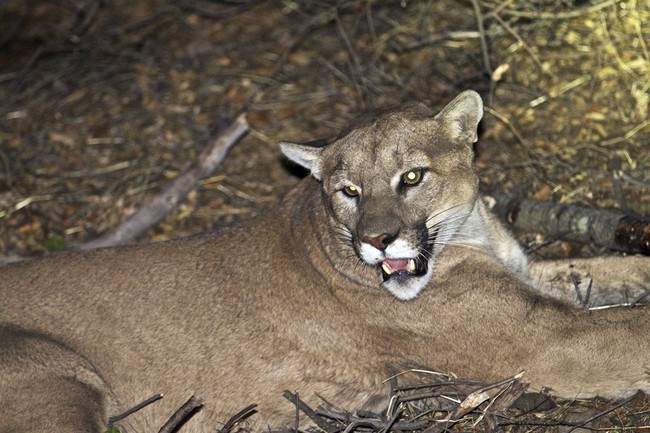
Mountain lions are fascinating critters. They are smart and adaptable, somewhat reclusive, and they are spreading, quite likely faster and farther than most folks might think. Back about 1970, my mother and her sister swore they saw one cross the road in front of them near our Allamakee County, Iowa home, and Mom was well versed in plants and wildlife; she’d know a mountain lion when she saw one. About twenty years later, there was a confirmed sighting I remember reading about in the western part of Iowa.
During my years in Colorado, which state has a population of about 7,000 cats, I saw them on several occasions, although always from a distance. One elk season, while out in the early morning after a fall of tracking snow, my hunting partner and loyal sidekick Rat (yes, that’s really what people call him) tracked a big tom through the snow for a couple of miles just to see if we could get a look at him, but he sensed us on his trail and ran for it.
There are no mountain lions in Alaska, so that’s the sum of my experience with the big cats. But, yes, the big cats are spreading, and there are some decent estimates of populations in several states of the lower 48 — but it seems they’ve missed some data.
Driven to near extinction in many regions due to hunting and habitat destruction, estimates of the mountain lion population in the U.S. vary widely, with state game agencies suggesting that the numbers range between 20,000 and 40,000 lions. However, conservation groups like the Mountain Lion Foundation believe the actual population is closer to 30,000, many of which are living in fragmented and degraded habitats.
Mountain lions are primarily found in the western states, occupying a range of habitats from the dense forests of the Pacific Northwest to the arid deserts of the Southwest.
Notable populations exist in states like California, Colorado, and Arizona, where conservation efforts are in place to mitigate human-wildlife conflicts and preserve habitats.
The map of lion populations, except for Florida, only shows populations in states west of the Mississippi. If we’re only talking about breeding populations, that may be accurate — or it may not; these animals are notoriously hard to get a handle on.
See Related: ‘Expert’ Claims Bigfoot Killed This Deer. Untrue, Because Bigfoot Doesn’t Exist.
Colorado Activists Pushing Ballot Initiative to Ban Hunting of Mountain Lions
Several eastern states have confirmed lion sightings, though, and sightings that far from known, established breeding populations imply that there is at least some breeding east of the Mississippi. Some key examples of states with confirmed lion sightings include Connecticut, Illinois, Indiana, Michigan, New York, Tennessee, and Wisconsin.
While the Colorado lions favor rimrock country and edge habitat, the big cats are pretty adaptable. They live in a wide variety of habitats, from Pacific northwest rain forests to the Everglades, and from dry rimrock to the northern taiga. In California, where bans on hunting have made them lose some of their natural caution around humans, they have been seen right near human habitations, and when a big apex predator loses its fear of humans, bad things can ensue.
Like coyotes and black bears, the big cats are moving back into their old haunts. That’s not necessarily a bad thing, as long as humans learn and understand how to deal with them. If confronted by a lion, make yourself look big and intimidating. Raise your arms above your head. Shout at the cat. If you are armed, fire a shot into the ground, but be ready to bring the weapon to bear on the cat if necessary — most of the time, it won’t be.
Most of all, exercise your situational awareness. Be alert, and be prepared to deal with what’s around you. We humans sometimes fall into the trap of thinking we’re somehow apart from nature — we’re not, and sometimes, people are reminded of that in some very unpleasant ways. Stay alert!
